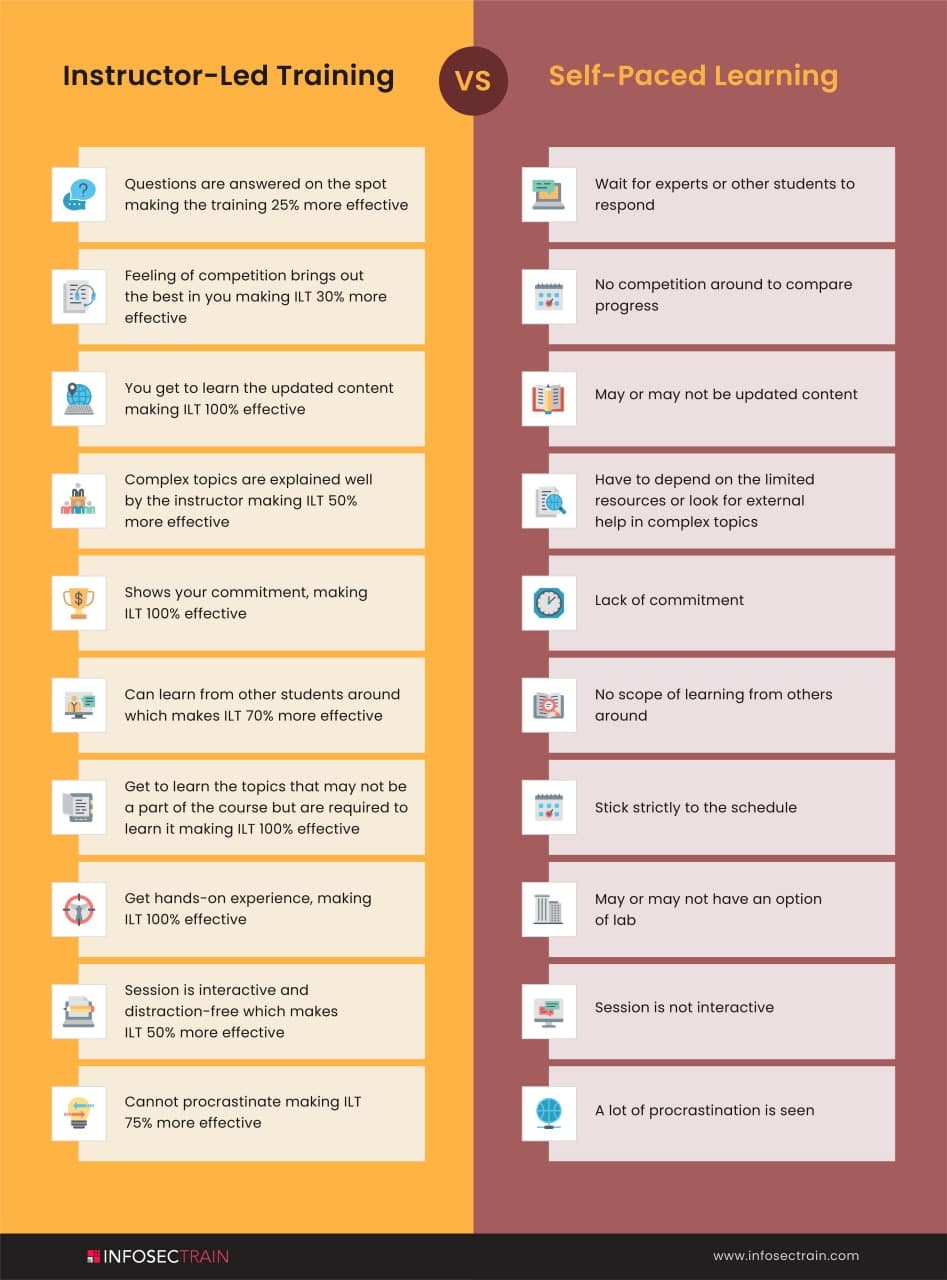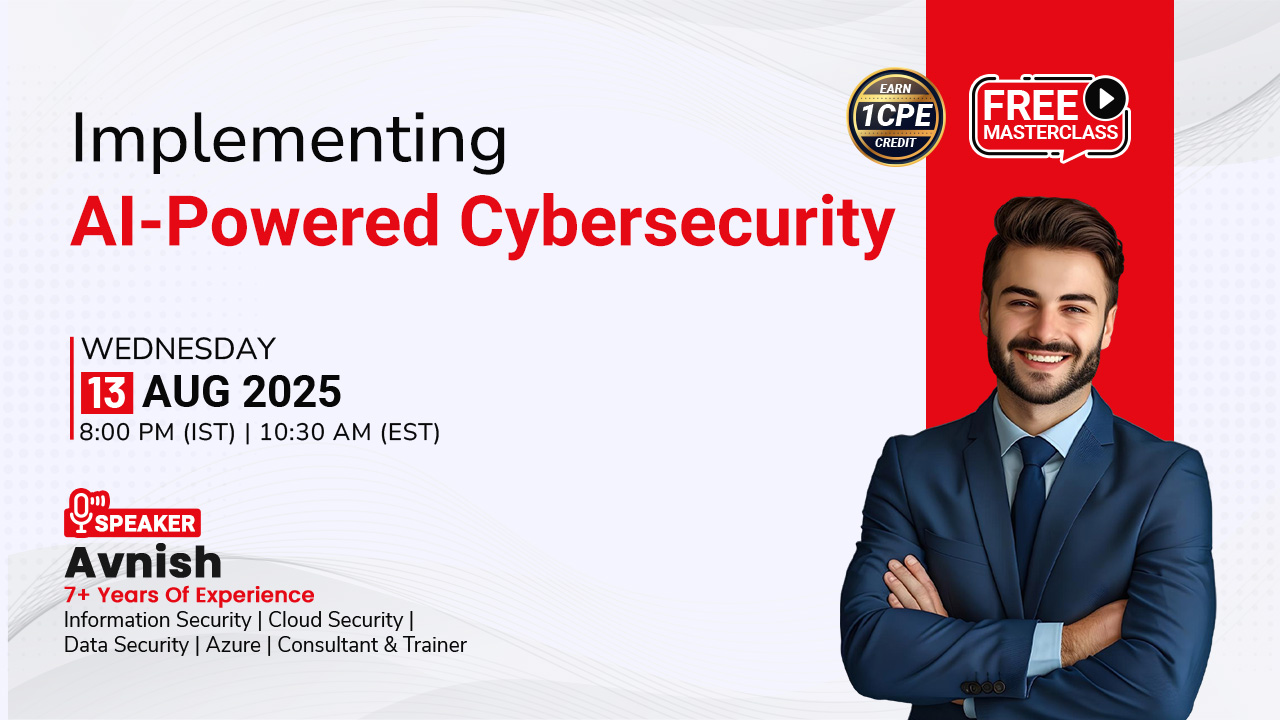Why Choose Instructor-Led Training over Self-Paced Learning for Azure?
Why Learn Azure?
Microsoft Azure is the world’s second-largest cloud computing platform, and it is rapidly expanding. It was first introduced in 2010 and, has since, amassed a sizable market share. In comparison to other Cloud service providers, it offers more services in more fields to more locations. It is a web-based application that lets us access and manages Microsoft’s resources and services. Azure’s service offerings are updated and upgraded on a regular basis to ensure customer happiness.

More than 80% of Fortune 500 businesses trust Microsoft Azure for their cloud service needs, and more are on the way to do so to meet their business needs. Azure professionals are in growing demand from organizations. It is a smart move to get Azure certified if you want to stimulate your career.
Benjamin Franklin stated it perfectly:
‘An investment in knowledge pays the best interest.’
Now that we know that learning Azure can be beneficial for us in our career, the question that arises is how to learn Azure?
It’s not only the individual professionals but many organizations also have a hard time deciding which type of training is ideal for their employees. While a major share of the teams opt for instructor-led training, many also concentrate on evaluating a self-paced training alternative. Let’s see what these two options are!
1. Self-Paced Learning: Any type of education that moves at the learner’s own pace is referred to as self-paced learning. A self-paced learning method gives students the tools and resources they need to learn at their own speed and choose their own learning sequence and emphasis. This differs significantly from typical instructor-led learning. Asynchronous learning is inherent in self-paced learning. There are various types of self-paced learning approaches like:
- eLearning: Short and learner-driven courses delivered entirely on a computer or mobile device are referred to as eLearning.
- Job Aids: It can be defined as a short or long document or a manual used for reference.
- Pre-Learning: This is the best approach proven so far that helps if you are going to join a training course. It can be defined as learning before learning.
- Recorded Webinars: These are the recorded sessions of the webinars or classes that were held in real-time.
- Videos: It’s needless to define videos. These are the recordings of knowledge sharing made available on various online platforms, to users, for the purpose of learning.
2. Instructor-Led Training: Instructor-Led Training or ILT is a traditional way of learning that we have used for generations. It’s a method in which a learner enrolls in a class where an instructor will guide a group of learners through a combination of lectures and practical coursework in real-time. The class can be either virtual or real. ILT is a collaborative learning system with a strong social component.
Why Instructor-Led Over Self-Paced for Azure?
While self-paced learning is in trend these days, it hasn’t overpowered instructor-led training. It is a flexible method of learning but it has its own limitations. Some of the cons of self-paced learning for Azure are:
- The most significant disadvantage of self-paced learning courses is the lack of commitment from the student. Azure needs your commitment and time. Because this technique relies largely on the student holding himself or herself accountable to finishing the course, it is simple for students to quit the course and never complete the training due to the high time and low money commitment.
- The absence of customized instruction is another disadvantage of self-paced learning for Azure. Outside of the already supplied resources, there isn’t much help accessible if you’re having trouble with a topic. While your learning provider may allow you to contact Azure experts or communicate with other students, you will have to wait for replies, which might cause a delay in your training.
- Self-paced courses may also be too low on the priority list, and they may wind up in the “never-ending future” or “next year’s TO DO list” category due to the lack of interest in Azure from the students.
- Validation of competence tests is lacking. Be it Azure or any other subject, double-checks of what’s being taught and what’s being retained are always required. This is what it takes to grasp a concept or execute a task safely in Azure and in accordance with industry standards.
- Another con of self-paced learning for Azure can be the gap between the expectations of a learner and a trainer. If you opt for self-paced learning, you may have an expectation from the trainer to explain various topics or the approach he/she follows to explain Cloud concepts. This expectation varies from person to person. A self-paced learning session of Azure that may work wonders for your friends or any other person, may not be the same for you.
- Azure is gaining popularity because its service offerings are updated and upgraded on a regular basis. We need to keep up with the change and switch our learning patterns with these updates. This makes the lifespan of Azure self-paced digital learning content shorter.
- Although e-learning comes in a variety of shapes, sizes, and themes, this does not imply that it is successful. Self-paced instruction is most effective when the subject matter is straightforward. It may not be the same for Azure. The less effective it is, the more complicated or advanced the topic is.
It is rightly said:
“It’s not about being the best, it is about helping those around you achieve their best.”
The aim of an instructor is the same. They believe in giving back to society. For them, it’s not just about imparting their knowledge to their students but bringing out the best in them.
Here are some of the benefits of opting for instructor-led training for Azure:
1. Open Discussions: The concept of instructor-led training is the same as a classroom. It is a place for open discussions on any topic. If you have a doubt, it will be cleared right away in real-time. The instructors can also ask questions to ensure you understand what’s being taught.
2. Competitive Approach: Being with other students brings out a competitive approach in a person. When you see the people around you performing better, you try to put in more effort that improves your performance as well.
3. Updated Curriculum: As already mentioned that Azure is regularly updated and upgraded, self-paced learning may not provide the updated curriculum. Even if the lectures in the course are backdated, an instructor is always up-to-date and will teach you the updated content.
4. Learning Out-of-the-Box: There are some topics that you understand easily but not all. A self-paced learning course will strictly stick to the course curriculum while an instructor will not just stick to the schedule but will make an effort to explain some complex topics in detail and will demonstrate some out-of-the-box real-time demos as well. Rather than following lesson wise approach trainer can take a path that is more easily understandable for the candidates.
5. Priority of Commitment: Registering yourself for instructor-led training shows your commitment and dedication to learn. Azure requires both. If you have a class at a certain time, you won’t be lenient with yourself and will try to attend the class at all costs.
6. Building Azure Networks: Be it virtual or real, connecting with other students will help you in a lot of ways. You can create a network and share concepts, study materials, reference videos, etc.
7. Filling the Knowledge Gap: Since Azure is a cloud computing course, it requires some prior knowledge of OS, networking, etc. It may be possible that you may have skipped some concepts from these topics. A trainer can help you brush these so that there is no knowledge gap as you move ahead in your journey of Azure.
8. Gaining hands-on experience in Azure: Azure is all about gaining practical knowledge of working with the cloud. Instructor-led training will always provide you with hands-on experience by giving you time to apply your learnings and will also rectify your mistakes on the spot.
9. Distraction-free environment: An instructor tries to create a distraction-free environment for the learners even in a virtual class. There are some expectations that are established ahead of time like not checking your phone for social media updates or the instructor asking questions to ensure you were mentally present.
10. Worth your time and money: A lot of people believe that instructor-led training can be more time-consuming and expensive than self-paced learning sessions. But an instructor provides an in-depth explanation of the topic. They ensure that you understand the concept by taking frequent feedback. There is an assurance that the trainer is well qualified and certified offering a quality session. They put in their best efforts to make the session more interactive and engaging. An instructor-led session will be worth your time and money.

No matter what the self-paced learning environment is offering, it is always better to have two-way communication when learning Azure. Instructor-led training for Azure from InfosecTrain is exactly what you need. With our well-versed and experienced trainers, we are among the leading training providers around the globe. They will assist you in grasping the fundamental principles and providing a thorough understanding of the subject. The Azure training course is well worth every dollar and minute you put into it.







 1800-843-7890 (India)
1800-843-7890 (India)